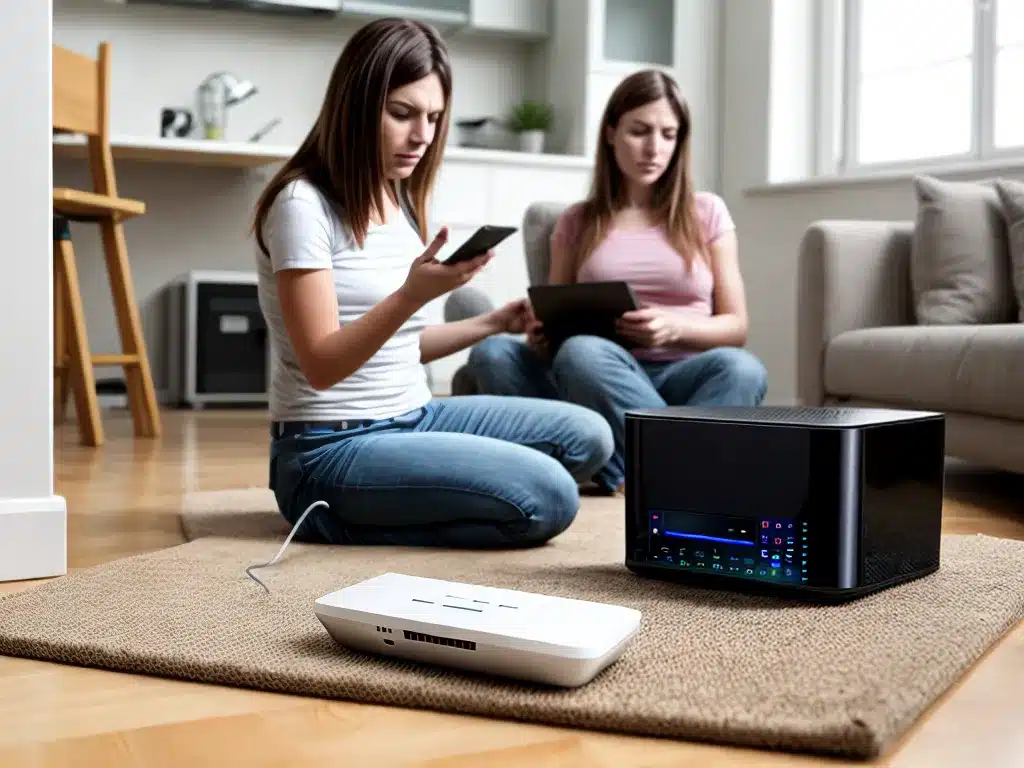
Having spotty Wi-Fi in certain areas of your home can be very frustrating. Those Wi-Fi dead zones make it difficult or impossible to get a strong wireless signal for your devices. However, there are several effective solutions you can try to banish Wi-Fi dead zones and get a strong signal in every corner of your home.
What Causes Wi-Fi Dead Zones?
There are a few common culprits behind Wi-Fi dead zones:
Distance from the Router
Wi-Fi signals get weaker the farther you move away from the wireless router. If parts of your home are too far from the router, the signal may be too weak to maintain a solid connection.
Obstacles and Interference
Objects like walls, appliances, and furniture can block or weaken Wi-Fi signals. Appliances like cordless phones, baby monitors, and microwaves can also cause wireless interference that degrades the signal.
Older Construction Materials
Materials like concrete, brick, and metal are less Wi-Fi friendly. The signals have a hard time penetrating these dense materials, resulting in dead zones.
Inadequate Router Performance
If your wireless router is low quality, outdated, or malfunctioning, it may not broadcast a strong enough signal throughout your home.
Solutions for Eliminating Wi-Fi Dead Zones
Here are some effective ways to troubleshoot and fix Wi-Fi dead zones in your house:
Update Your Router Firmware
Check if your router has the latest firmware installed. Firmware updates often improve Wi-Fi connectivity and performance. Updating the firmware may strengthen your wireless signal.
Adjust the Router Placement
Try moving your wireless router to a more central location in your home. Placing it higher up and away from obstacles can also help Wi-Fi propagate better.
Add a Wireless Range Extender
Wireless range extenders grab the Wi-Fi signal from your router and rebroadcast it further into your home. Strategically placing one can easily amplify your wireless network and eliminate dead zones.
Use a Mesh Wi-Fi System
Mesh Wi-Fi systems use multiple access points throughout your home to blanket every room in strong Wi-Fi. They work seamlessly together to create one unified wireless network without any dead zones.
Change the Wireless Channel
If you have interference from neighboring Wi-Fi networks, change your router’s wireless channel to a less crowded one. This helps minimize signal overlap and interference.
Check for Source of Interference
Track down and move devices that could be interfering with Wi-Fi like cordless phones, baby monitors, or microwaves. Also check if metal objects are too close to your router.
Upgrade Your Router
If your router is outdated or underpowered, upgrading to a newer dual or tri-band router can provide faster speeds and better range.
Tips for the Best Wi-Fi Coverage
Here are some additional tips to optimize your home Wi-Fi network:
-
Place your router centrally in the area you want to cover.
-
Elevate your router for better signal dispersion throughout your home.
-
Connect devices to 5 GHz band instead of 2.4 GHz for less interference and congestion.
-
Use Ethernet cables for devices that don’t move like desktop computers, TVs, and gaming consoles.
-
Make sure the Wi-Fi antennae on your router are pointed vertically, not horizontally.
-
Download Wi-Fi analyzer apps to identify dead zones and the strongest wireless channels.
With a few tweaks and upgrades, you can enjoy seamless Wi-Fi coverage in every corner of your home. No more frustrating dead zones!












